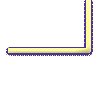 |
| The survey method of research asks a representative sample of people
oral or written questions to find out about their attitudes, behaviours, beliefs, opinions, and values. |
 The
survey method gathers quantitative data on those thoughts, feelings, and behaviours we have in common, or on which
we differ. The survey method asks a representative sample of people the same questions about particular attitudes,
opinions, values and beliefs. If the sample is truly representative this allows the generalisation of results to
the population from which the sample came. Surveys can be used on their own or with other research methods such as
the experiment, observation and the interview. The survey method shares an important feature with the more
structured of interviews and observations. This is the gathering of data by self-report from a respondent or
interviewee. Surveys modes see surveys conducted by post, face-to-face, by telephone, videophone and the Internet.
A good survey will be designed well, with standardised instructions and questions. A pilot survey is often
conducted to allow this to occur. Survey questions can be either open or closed. Open questions give rise to open,
descriptive answers, while closed questions restrict respondents' choice of answer. Open questions can give you
too much qualitative, descriptive information in answers, which makes working out our common or differing attitudes,
opinions etc. difficult. Closed questions, which give quantitative or numerical answers, are useful, especially if a
Likert scale of measurement is used. Advantages of the survey method of research are that it is cheap, easily
administered; replicable, and a large amount of data can be got from a lot of people in a fairly short time. Most
importantly a well-designed survey, if given to a representative sample, allows the researcher to generalise their
results to the population from which this sample came. Disadvantages include poor design, GIGO, reliability and
validity, acquiescence response, a tendency to give socially desirable answers, and response and
sampling bias. The
survey method gathers quantitative data on those thoughts, feelings, and behaviours we have in common, or on which
we differ. The survey method asks a representative sample of people the same questions about particular attitudes,
opinions, values and beliefs. If the sample is truly representative this allows the generalisation of results to
the population from which the sample came. Surveys can be used on their own or with other research methods such as
the experiment, observation and the interview. The survey method shares an important feature with the more
structured of interviews and observations. This is the gathering of data by self-report from a respondent or
interviewee. Surveys modes see surveys conducted by post, face-to-face, by telephone, videophone and the Internet.
A good survey will be designed well, with standardised instructions and questions. A pilot survey is often
conducted to allow this to occur. Survey questions can be either open or closed. Open questions give rise to open,
descriptive answers, while closed questions restrict respondents' choice of answer. Open questions can give you
too much qualitative, descriptive information in answers, which makes working out our common or differing attitudes,
opinions etc. difficult. Closed questions, which give quantitative or numerical answers, are useful, especially if a
Likert scale of measurement is used. Advantages of the survey method of research are that it is cheap, easily
administered; replicable, and a large amount of data can be got from a lot of people in a fairly short time. Most
importantly a well-designed survey, if given to a representative sample, allows the researcher to generalise their
results to the population from which this sample came. Disadvantages include poor design, GIGO, reliability and
validity, acquiescence response, a tendency to give socially desirable answers, and response and
sampling bias.
|
| The Survey Method |
| Advantages |
Disadvantages |
- A survey can generate empirical data giving a measurement of behaviours, attitudes,
opinions, beliefs, and values of a target population.
- Large amounts of standardised information can be got from a large number of
people in a short space of time. If designed well and completed by a representative
number of people, survey results can be generalised onto the population from which
the representative sample came.
- Surveys are highly replicable, and can be used on a longitudinal basis to
constantly update us on questions of interest. Such as voting trends etc.
- Surveys are also easy to score, unless open-ended questions used. We get
quantifiable data from a survey that can be useful to help develop and support
hypotheses.
- They are cheap! If a survey is well designed it is a most useful tool of
research in its own right, or as rich soil for future research using other
methods of enquiry.
|
- GIGO: Any research method that uses oral or written instructions / questions
must first standardise them. This is to ensure that all participants / respondents get
the same clear and unambiguous instructions / questions. What you put in to a survey by
way of careful design, you get out of it in terms of valid and reliable data. Poorly
designed instructions and questions see a survey suffer from the GIGO effect. 'Garbage
in, garbage out'!
- Acquiescence response is a tendency people have to agree, or say 'Yes'; especially to things
that they think don't affect them that much. Surveys can be very prone to acquiescence response.
- Response set arises when a respondent think they see a pattern of desired answers to survey
questions, and answers accordingly. To avoid response set, scaling, and the randomisation of questions
is recommended.
|
How To Design A Good Psychological Survey.
Before doing anything take on board the following five principles behind survey design. These are:
- Keep the language simple.
Parten (1950) says that language used
in a survey should be able to be understood by an 11 year old.
- Keep the questions short and on one issue.
The longer a survey
the less likely folk will fill it in.
- Avoid technical terms.
As people will probably not
know what you are talking about!
- Avoid leading questions.
An example of a leading question is:
'Have you stopped smoking cannabis? Yes/No'
Whatever way the respondent answers
this they would be breaking the law. Think about it, and don't use leading questions in survey design.
- Avoid emotive or moral questions.
An example here would be:
'Have you ever had an abortion? Yes/No'
These type of emotive or moral questions
asked of others are really none of our business!
|
12 Steps To A Successful Psychological Survey
If you decide
to use a survey as a research method in psychological research it's a good idea to adopt the
following design model or research process.
| Select an area of psychological interest. |
|
|
|
|
|
| Research the topic area to get ideas about what
questions to ask. Use SCIRUS on the Home Page as your starting point. |
|
|
|
|
|
| Write your questions down. |
|
|
|
|
|
|
|
|
|
|
|
| For better survey item analysis use a
Likert Scale to get quantitative data on answers to your survey item questions. |
|
|
|
|
|
|
|
|
|
|
|
Write down your
standardised instructions,
which come at the begionning of your survey. They should also make reference to the general
purpose of the survey, confirming that the respondent agrees to take part, has a right to
withdraw etc. See The BPS Psychologists Code of Conduct at
http://www.bps.org.uk/about/rules5.cfm
( link will open in a new window. To return here, close that window. ) |
|
|
|
|
|
| Conduct a pilot survey with a small group
of people. It is best if they are from the same group as will complete the final survey.
Their job is to tell you if they understand the standardised instructions, can follow how to
answer the questions, the questions themselves etc. |
|
 |
|
|
|
| Redraft and if
necessary pilot it again. Don't be lazy. Remember GIGO. |
|
 |
|
|
|
|
|
|
|
|
|
| Debrief your respondents,
and give them an indication of how to find out the results. |
|
|
|
|
|
| Analyse your results. And that's it! |
|
|
|
|
|
|
<<< Back to Research Methods Home
<<< Back to the Correlational Technique
<<< Back to the Observational Method
Forward to the Interview Method >>>
|
 The
survey method gathers quantitative data on those thoughts, feelings, and behaviours we have in common, or on which
we differ. The survey method asks a representative sample of people the same questions about particular attitudes,
opinions, values and beliefs. If the sample is truly representative this allows the generalisation of results to
the population from which the sample came. Surveys can be used on their own or with other research methods such as
the experiment, observation and the interview. The survey method shares an important feature with the more
structured of interviews and observations. This is the gathering of data by self-report from a respondent or
interviewee. Surveys modes see surveys conducted by post, face-to-face, by telephone, videophone and the Internet.
A good survey will be designed well, with standardised instructions and questions. A pilot survey is often
conducted to allow this to occur. Survey questions can be either open or closed. Open questions give rise to open,
descriptive answers, while closed questions restrict respondents' choice of answer. Open questions can give you
too much qualitative, descriptive information in answers, which makes working out our common or differing attitudes,
opinions etc. difficult. Closed questions, which give quantitative or numerical answers, are useful, especially if a
Likert scale of measurement is used. Advantages of the survey method of research are that it is cheap, easily
administered; replicable, and a large amount of data can be got from a lot of people in a fairly short time. Most
importantly a well-designed survey, if given to a representative sample, allows the researcher to generalise their
results to the population from which this sample came. Disadvantages include poor design, GIGO, reliability and
validity, acquiescence response, a tendency to give socially desirable answers, and response and
sampling bias.
The
survey method gathers quantitative data on those thoughts, feelings, and behaviours we have in common, or on which
we differ. The survey method asks a representative sample of people the same questions about particular attitudes,
opinions, values and beliefs. If the sample is truly representative this allows the generalisation of results to
the population from which the sample came. Surveys can be used on their own or with other research methods such as
the experiment, observation and the interview. The survey method shares an important feature with the more
structured of interviews and observations. This is the gathering of data by self-report from a respondent or
interviewee. Surveys modes see surveys conducted by post, face-to-face, by telephone, videophone and the Internet.
A good survey will be designed well, with standardised instructions and questions. A pilot survey is often
conducted to allow this to occur. Survey questions can be either open or closed. Open questions give rise to open,
descriptive answers, while closed questions restrict respondents' choice of answer. Open questions can give you
too much qualitative, descriptive information in answers, which makes working out our common or differing attitudes,
opinions etc. difficult. Closed questions, which give quantitative or numerical answers, are useful, especially if a
Likert scale of measurement is used. Advantages of the survey method of research are that it is cheap, easily
administered; replicable, and a large amount of data can be got from a lot of people in a fairly short time. Most
importantly a well-designed survey, if given to a representative sample, allows the researcher to generalise their
results to the population from which this sample came. Disadvantages include poor design, GIGO, reliability and
validity, acquiescence response, a tendency to give socially desirable answers, and response and
sampling bias.

